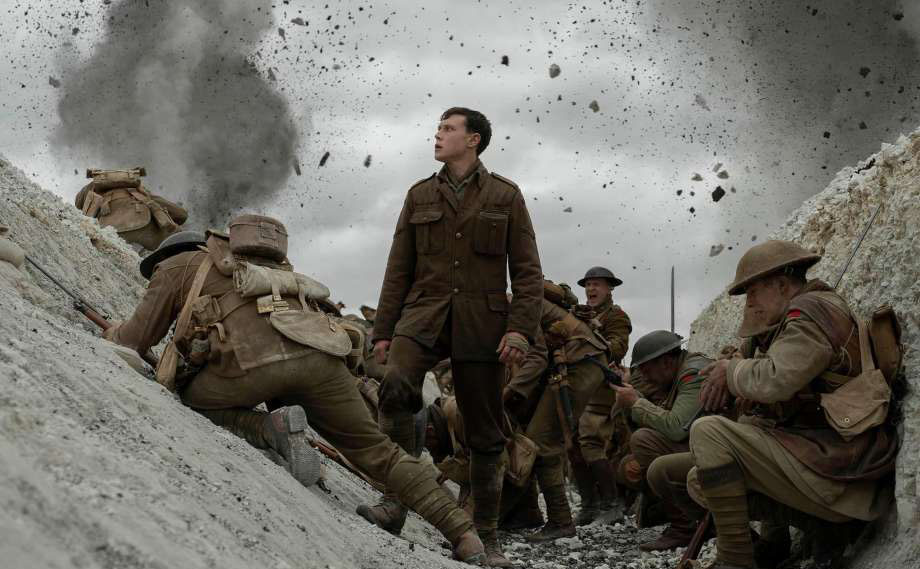(Originally ran Sunday, January 19 in The Times and The News-Star.)
A rainy weekend afternoon with no football on television meant a solo trip to World War I.
You’ve probably seen the previews of 1917, of a young soldier running by a long trench while mortars explode behind him. My advice here is when you go to this movie, don’t leave and go to the bathroom or get popcorn during this part. Just saying.
The preview was so pretty (in a war kind of way), so haunting and compelling that I could not get to the theatre fast enough. Glad I did and I’ll tell you why because you might want to go.
But first, the other movie I saw over the holidays was Bombshell, an account of the real-life history of abuse — more than a decade long — at Fox News, a sexual harassment scandal that ended with the firing and complete downfall of Roger Ailes, the chairman and CEO of Fox News and a creepy dude.
John Lithgow plays him in the movie and is perfectly disgusting. This is a guy who won three Emmys for Outstanding Lead Actor in a Comedy Series on 3rd Rock from the Sun, and his portrayal of Ailes is the opposite of funny. You watch him in no more than two scenes and you feel you might need to go get a tetanus shot.
So I guess I saw two war movies, just on different battlefields. Truth be told, Bombshell is probably more of a war story than 1917. Even the title is better. There is a sense in the end that the good guys, who are women, won. But it’s a messy story for sure. Even though there are all sorts of pretty people in it, you feel sort of creeped out while you’re watching it and when it’s over.
1917 is a whole other ballgame. Two young British soldiers, napping just behind the front lines in World War I, are called to the front and told to deliver a message that will call off an attack planned for the next morning. It will take them eight hours to reach the troops, and if they don’t make it, 1,600 British soldiers will walk into a German ambush. One of those soldiers involved in the next morning’s planned attack is the older brother of one of the young men who must deliver the message.
In other words, things are a bit urgent, and very personal.
Once you see it, you’ll agree that 1917 will win every award there is for cinematography. They might even have to make up some other technical awards to give these people. It’s that pretty and realistic. This has to be the way WWI looked, from the trenches to the bombed cities to the bloated rot.
It’s filmed as one continuous shot, through the magic of editing. So the race seems to be in real time, which heightens the urgency.
I felt I should have liked it more so I called a couple of creative friends who loved it and got their take. After talking to them, I realized I’d wanted The Bad Guy to get killed, but there wasn’t a bad guy. And this wasn’t really a war movie. It was better than that.
It’s about young, idealistic men given an almost impossible life-or-death task. A person has to deliver a message in a set amount of time, while people are trying to kill him. That’s urgency. And you wonder, “Could I have done that?”
The two young actors are so natural and believable, and you’ve never seen them so they don’t get in the way of the story for being famous.
And finally it’s about family, one brother trying to save another, one soldier/brother trying to save another. Or 1,600 others.
This same story could have been set in dozens of other places; it just happens to be in the French countryside, wasted by war.
Another tip: When the dogfight takes place — one of the planes is heading toward an old barn and is also in the trailer — don’t go to the bathroom or to get popcorn then either. Ditto for when the two guys first move into the Germans’ abandoned front lines and into a bunker.
Bottom line: if you can see only one of these two movies, don’t go to the war movie. Go see 1917 instead.
-30-
